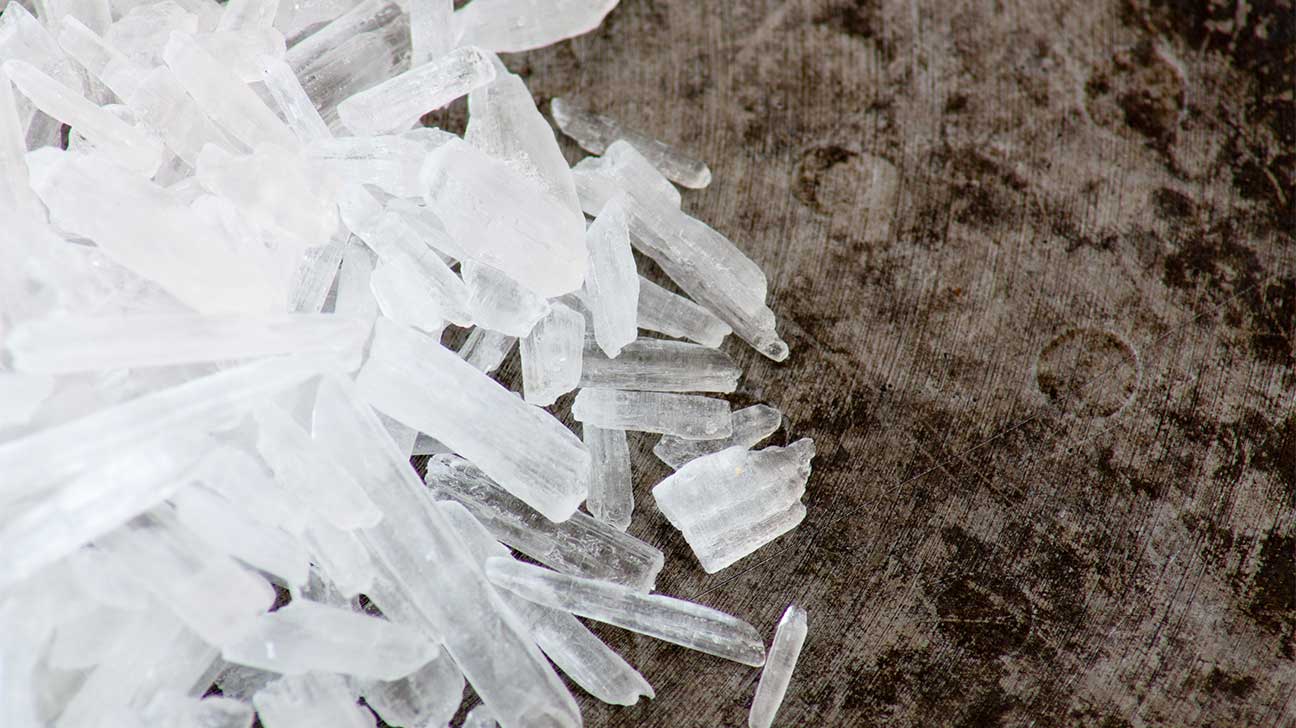
Methamphetamine, or “meth”, is a central nervous system stimulant that can quickly provoke physical dependence and psychological addiction.
Meth abuse is associated with several health risks including psychosis, mental disorders, cardiovascular disease, and overdose.
According to the National Survey on Drug Use and Health (NSDUH), approximately 1.6 million adults use methamphetamine each year. Of these, over 50 percent admitted to having a methamphetamine use disorder.
Causes Of Meth Addiction
Addiction is a disease that afflicts the brain. It is not caused by a single factor, but by a variety of environmental triggers, physical changes in the brain, and genetic factors.
Risk factors for developing meth addiction include:
- a family history of addiction
- living in an environment where meth is abused
- lack of parental supervision
- pre-existing mental illness
- low socioeconomic status
- peer substance abuse
- genetic disposition
The more risk factors a person is subjected to, the higher their probability of developing a substance use disorder involving methamphetamine.
Types Of Methamphetamine
There are several different forms that methamphetamine can take. Different types of meth can be distinguished by their physical appearance and purity.
Powder Meth
Powder meth, also known as “speed”, is the least potent form of methamphetamine. Meth can be snorted, injected, or pressed into pill form and ingested.
Base Meth
Base meth is an oily substance that is generally regarded to be more potent than powdered meth. The base has a yellow, white, or brown color and is usually injected with a needle or swallowed.
Crystal Meth
Crystal meth, also known as “ice” or “crystal”, is a crystalline substance with an opaque white color. This is the most potent form of methamphetamine and can be smoked or intravenously injected.
Signs Of Methamphetamine Addiction
People who use meth habitually will exhibit an array of physical and behavioral symptoms. You may also notice common types of meth paraphernalia lying around the home.
Physical Signs Of Addiction
Some of the most obvious signs of meth use are changes in physical appearance. Visible symptoms include premature aging, meth sores on the skin, dilated pupils, and weight loss.
One of the most notable signs of meth use is “meth mouth”, which is characterized by tooth decay and broken teeth due to repeated use of the drug.
Behavioral Signs Of Addiction
Behavioral signs of meth abuse may include paranoia or hallucinations, being alert or physically active, teeth grinding, violent outbursts or mood swings, and sexual promiscuity.
Meth Paraphernalia
If you suspect that someone is using meth, you may want to know what kinds of tools and accessories are used for meth.
Meth paraphernalia may include:
- needles
- syringes
- tinfoil
- credit cards or other types of plastic cards
- rolled up dollar bills
- plastic pen casings
- razor blades
- small mirrors
- bent spoons with burn marks
- butane lighters
- small glass or metal pipes
A meth lab, a location where meth is illegally manufactured, can be identified by blacked-out windows, chemical odors, or the presence of lab equipment such as funnels and beakers.
Side Effects Of Meth Addiction
There are a number of negative short-term and long-term side effects that people who are addicted to meth may experience.
Short-Term Effects
Short-term side effects may include wakefulness, skin sores, high blood pressure and body temperature, violent behavior, rapid heart rate, decreased fatigue, and hyperthermia.
Long-Term Effects
Long-term side effects of meth abuse may include brain damage, liver disease, kidney failure, cirrhosis, domestic violence, and legal consequences for risky behaviors.
People are also at high risk of contracting blood-borne diseases such as hepatitis and HIV/AIDS.
Withdrawal Symptoms Of Methamphetamine Abuse
Due to the intense physical dependence on meth people can develop, if the substance is suddenly removed from the body, painful withdrawal symptoms can occur.
Symptoms of meth withdrawal include:
- paranoia
- crippling depression
- intense cravings
- increased appetite
- restlessness and anxiety
- insomnia
- psychosis
Methamphetamine withdrawal is potentially life-threatening. It’s highly recommended to seek a medically monitored detox program when you’re ready to wane off meth use.
Signs Of A Methamphetamine Overdose
Meth overdose occurs when too much of the substance is ingested and the body cannot process it, leading to organ failure and death. Anyone who uses methamphetamine is at risk of overdose.
Signs of meth overdose:
- severe stomach pain, nausea, diarrhea, and vomiting
- hyperventilation and labored breathing
- seizures
- extreme confusion or psychosis
Due to the potency of methamphetamine, an overdose may have dire and permanent consequences including paralysis, chronic anxiety, decreased mental function, and more.
Treatment Programs For Methamphetamine Addiction
It can be hard for people addicted to meth to stop using the drug on their own. At a rehab center, people can get help overcoming substance abuse.
Drug addiction treatment options:
- medication-assisted treatment (MAT)
- cognitive behavioral therapy (CBT)
- intervention services
- detoxification
- support groups for opioid use
- dual diagnosis treatment for co-occurring mental health disorders
- inpatient treatment
- outpatient care
- 12-step programs
- individual, group, and family therapy
It may be frightening to seek treatment for methamphetamine addiction, but help is available using the evidence-based treatment approaches listed above.
Methamphetamine Addiction FAQs
The information listed below may answer your questions about methamphetamine addiction and treatment.
What Is “Tweaking” On Meth?
Tweaking is a condition that occurs following a meth binge. After prolonged use, a person is no longer able to experience the same euphoric high and tweaking will begin.
Tweaking can be characterized by intense cravings and feelings of desperation, accompanied with symptoms such as delusions, hallucinations, and an altered sense of reality.
Will Using Meth One Time Make Me Addicted?
While taking meth the first time will likely induce an intense euphoric sensation, you will only become addicted after continued use.
How Do I Know I Need To Seek Professional Help For Meth Addiction?
If you’re currently worried about your meth use, or you’ve experienced legal or financial stressors due to using meth, you should likely seek addiction recovery treatment.
Find A Rehab Program For Methamphetamine Abuse Today
Call our helpline today for more information on addiction treatment providers if you or a loved one have a substance use disorder. We can assist you on your journey to sobriety.
Article Sources- Centers for Disease Control and Prevention (CDC) — Patterns and Characteristics of Methamphetamine Use Among Adults
https://www.cdc.gov/mmwr/volumes/69/wr/mm6912a1.htm - National Institute on Drug Abuse (NIDA) — Methamphetamine DrugFacts
https://nida.nih.gov/publications/drugfacts/methamphetamine - Substance Abuse and Mental Health Services Administration (SAMHSA) — Know the Risks of Meth
https://www.samhsa.gov/meth


